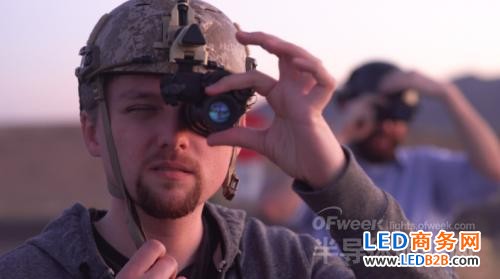Ford Fusion Autopilot Test Vehicle uses LiDAR sensor to view the six-way road in a dark environment
Ford is testing the performance of Fusion Hybrid self-driving vehicles in the dark, as the latest developments in LiDAR laser ranging and positioning navigation sensor technology, which will help vehicles have autopilot capabilities beyond human sensory limits.
A series of tests recently conducted at the Ford Motors Arizona Vehicle Test Site show that using LiDAR sensor technology and three-dimensional maps to work together, test vehicles can achieve autonomous driving without relying on headlights.
Related tests will continue to drive the Ford Smart Mobility program, which is designed to drive Ford's new stage of development in in-vehicle connectivity, smart mobile travel, autonomous driving, consumer experience, and data analytics.
Witman, Arizona, USA, April 12, 2016 - Recently, after nightfall, a Ford Fusion hybrid self-driving vehicle with no headlights turned on successfully completed the road on the deserted desert road. The test of automatic navigation in the night has achieved a driving task that is extremely dangerous for manual driving.

The nighttime environmental road test at the Ford Arizona Auto Test Site, which stands out from the five fingers, is another important milestone in the development of Ford's fully automated driving technology, and is also to bring "the convenience of fully autonomous driving technology to consumers around the world." "This commitment is another step forward. This vital test proves to us that even without the camera that relies on visible light to work, Ford's LiDAR sensor is still powerful enough to work with the vehicle's virtual driving software to control the vehicle smoothly. Smooth driving on the winding road. Although for radar driving, radar, camera and LiDAR laser ranging, positioning and navigation sensors are the best conditions, but the test proves that the LiDAR sensor is fully capable of "single combat", even in the absence of headlights. In the case of normal work.
According to data provided by the National Highway Traffic Safety Administration, the accidental death rate at night is about three times higher than that during the day.
“With the LiDAR sensor, the test vehicle can no longer rely on light illumination, as well as the white lane line on the asphalt road captured by the car camera,†said Jim McBride, head of Automated Driving Technology at Ford Motor Company. “In fact, the LiDAR sensor allows autopilot vehicles to be in the dark. I can drive freely in the environment."
In order to travel freely in dark environments, Ford Autopilot test vehicles use high-resolution 3D maps that include roads, road signs, topography, and landmarks such as signs, buildings, and trees. During driving, the test vehicle transmits pulses through LiDAR to accurately position itself on the map. At the same time, the data received by the radar can be integrated with the LiDAR sensor data to further improve the comprehensive sensing capability of the autonomous vehicle.
In the desert road test, Ford engineers used night vision goggles to make a comprehensive observation of the test vehicle inside and outside the vehicle. The night vision goggles help them to clearly observe that the vehicle's LiDAR sensor continuously emits a grid of infrared laser rays around the body during the vehicle's travel. The LiDAR sensor emits laser pulses at a frequency of 2.8 million/second for accurate scanning of the surrounding environment.
Dc Motor Current Control,High Current Dc Motor Controller,High Current Dc Motor Speed Controller,High Current Dc Controller
Jinan Keya Electron Science And Technology Co., Ltd. , https://www.keyaservo.com